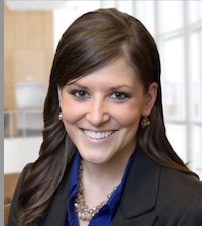This article was originally published in a sponsored newsletter.
As data continues to support orthokeratology (ortho-k) as a method for myopia control and adoption of the practice grows, there is a lot of new technology hitting the market. This abundance of choices may leave a practitioner looking to add ortho-k in a bit of a confusion on what is really needed to be successful.
When a young patient presents at the clinic looking to pursue ortho-k for myopia control, there are instruments that are considered standard of care and others that are beneficials to have. With each instrument having slightly different features, the following considerations could be made when selecting the next investment for an ortho-k practice.
Topographer
- Given the technology advancements in ortho-k lens design, many laboratories offer design modules that are compatible with topography software. These design platforms can assist in building a customized ortho-k lens or assist in selecting parameters like lens diameter and peripheral curve toricity.
- Many new topographers have built in anterior segment photography and videography with both white and cobalt blue light. When troubleshooting a lens fitting, the ability to send photos and videos to lab consultants can be very helpful in making correct modifications.
Tomographer
- The addition of tomographers in practice has improved our ability to detect conditions like keratoconus at an earlier disease state. While a tomographer is not an essential part of myopia management, a periodic full-cornea scan can rule out the development of keratoconus. This is particularly helpful when an ortho-k fitting is yielding subpar vision results in an otherwise well-fitting lens.
Biometry
- The foundational goal of myopia control is to limit axial lengthening of the eye. Being able to accurately measure axial length has become an essential part of myopia management. Previously, the best way to do that was with an optical biometer, which is a device used to calculate IOL powers for cataract surgery. Thankfully, the growth in the myopia control industry has sparked design for combination instruments that include axial length measurements alongside other useful measurements for managing myopia. There are also modules built into these instruments that can assist the provider in determining whether axial length changes are physiologic—consistent with typical eye growth of a child—versus pathologic myopic changes. The reports generated by these modules are particularly interesting to parents and can keep them invested in proper myopia care year-over-year.
Auto-refraction
- Auto-refraction is a great tool for baseline myopia measurements, and cycloplegic autorefractions are considered more reliable than subjective refractions in young kids. However, autorefractors do not always accurately assess residual refractive error in an eye that is being treated with ortho-k. Objectively, retinoscopy can be more reliable with practice. If the clinic participates in clinical research, and is interested in conducting myopia studies, an auto-refraction is typically included in protocols.
Posterior Segment Photography
- Retinal imaging in young myopes can be beneficial to monitor for peripapillary atrophy and macular changes that may clue a practitioner in to more aggressive management.
Myopia management with ortho-k is such a rewarding experience for the patient, parent, and practitioner. Adding valuable tools to support management decisions and verify effectiveness of treatment makes the journey all the more worthwhile.




